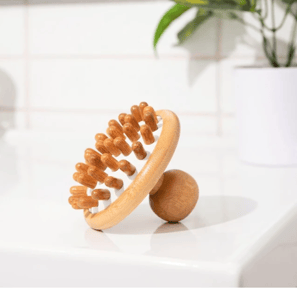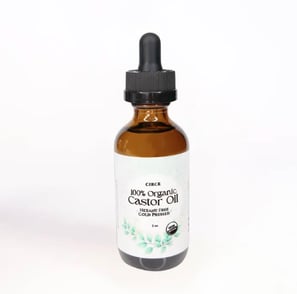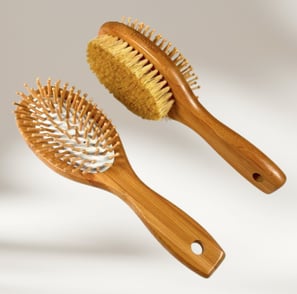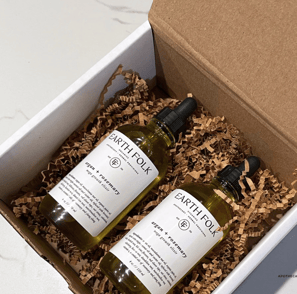Natural Hair Growth Routine (That Actually Works)
This article shares a natural and sustainable hair growth routine—focusing on internal health, gentle daily habits, and weekly scalp treatments.
SELF • GLOW-UP • WELL
MAY 18, 2025
I used to suffer from brittle, lackluster hair—a combination of excessive heat styling, bleaching, and (as I later discovered) nutritional deficiencies. I never lost significant amounts of hair, but my hair felt thinner, more brittle, and as if it had ceased growing entirely.
So I began searching for a natural and sustainable routine—one that accommodated my lifestyle, fit my price range, and really delivered long-term. By way of TikTok, friends, and a ton of researching, I built a week-long routine slowly but surely. Sundays are officially my "Haircare Sunday" these days, and the outcomes have been genuine: healthier hair that's shinier and fuller-looking—even baby hairs that have returned!
1. Recognize the Root Causes
I went and got a scalp analysis before even attempting random products. I consulted with a physician and got a whole panel of nutrients, as well as my vitamin D3 levels. If your hair is continually weak and thinner, the reason could possibly be internal.s well—if you suffer from hair loss or an itchy scalp.
Some of the possible deficiencies that affect hair health:
Iron – Low levels can cause excessive shedding
Zinc – Important for hair follicle strength
Vitamin D – Linked to alopecia and hair thinning
Biotin (B7) – Deficiency can lead to brittle hair
Essential Fatty Acids – Needed for scalp and hair hydration
Niacin (B3) – Lack may cause brittle hair and scalp issues
Selenium – Both too little and too much can cause problems
Vitamin A – Overdose may trigger hair loss
Selenium – Excess intake can lead to shedding
Vitamin E – High doses may disrupt hair growth
Tip: Get a dermatologist's scalp analysis as well—if you suffer from hair loss or an itchy scalp.
2. Strengthen from the Inside & Outside
Increase protein consumption: Hair is constructed of keratin, a protein. Therefore, ensuring you have an adequate amount of protein in your diet is paramount. Good sources include eggs, lentils, quinoa, chicken, turkey, and fatty fish like salmon.
Increase your biotin levels: Biotin fortifies hair and promotes its growth. Include foods high in biotin such as nuts, avocados, and sweet potatoes in your diet.
Consider supplements: In case of need. Following a physician’s consultation (!) add supplements to your routine.
Tip: Also a huge factor in keeping your hair healthy is having a good supply of water and lowering your stress levels. It turns out that stress itself causes hair loss! Managing stress is as vital as what you consume.
3. Daily Habits and No-No's
I switched to using gentle shampoo and altering a few styling routines for healthier hair:
✔ Minimize daily heat styling; when you have to, always apply a heat protectant.
✔ Reserve the tight bun for special occasions alone.
✔ Use dry shampoo in a case of emergency (prevent clogged pores).
✔ Soak in lukewarm water and rinse with cold water.
✔ Dry your scalp to avoid moisture problems.
✔ Do not over-wash, over-brush, or brush hair when wet.
✔ Use a natural fiber bristle brush. Clean it weekly.
✔ Shampoo the roots of the hair and apply a mask to the ends and condition afterwards.
✔ Sleep with a loose braid and a silk pillowcase.
4. Create a Weekly Haircare Routine That Fosters Growth
Here's how you can give your hair growth an extra boost with weekly treatments (and I promise you, this does work – I noticed the difference after two months)
1. Dry Scalp Massage (4-10 minutes)
Massaging your scalp increases blood flow into the hair follicles and stimulates hair growth. Gently massage using fingertips or a hair brush in circular movements. Do it for 4–10 minutes daily for best results — consistency matters! It's relaxing as well as stimulates hair growth.
TIP: Ditch the pricey scalp massagers – you already have all you need with your fingers! Simply concentrate on applying oils and doing a light massage.
2. Rosemary Oil
Studies have proven that rosemary oil stimulates hair growth with a 2015 review that exposed participants with 2% Minoxidil and found that it is equally as effective. Personally, I blend 1–2 pumps of rosemary oil with almond oil and massage the mixture into the scalp. When shopping for it, make sure you purchase the organic rosemary oil in order to get the highest quality.
TIP: For an easy DIY solution, search YouTube for rosemary spray recipes you can make at home! Just be sure to use 100% pure, therapeutic-grade rosemary oil for best results.
3. Castor Oil
Castor oil is particularly famous for its anti-inflammatory properties and its ability to improve blood flow in the scalp, which is why it’s popular for promoting hair growth. It’s also great for eyelashes and eyebrows. Since it’s a very thick oil, warm 1–2 tablespoons before use or mix it with a lighter carrier oils like coconut or jojoba oil. Apply it to your scalp and let it sit for 1–2 hours. Then, wash it out thoroughly with shampoo—double shampooing may be necessary to remove the oil completely.
TIP: Use organic, cold-pressed, 100% pure oil in dark-colored bottles when you select castor oil. This keeps the oil's properties and potency intact.
It's not a matter of searching for one miracle product but rather of establishing a sustainable routine that moisturizes your hair both externally and internally. Around the three-month mark, I began seeing changes in my hair: less breakage, increased shine, and even baby hairs along the hairline. The key is consistency, and it is the little day-to-day things that bear enormous difference. Why not experiment with some of these changes and observe how your hair reacts?















